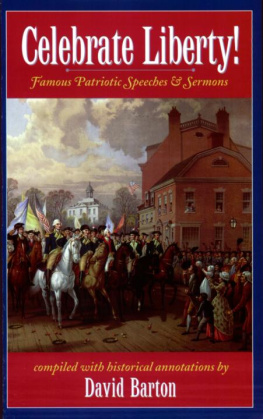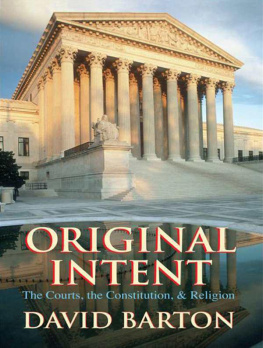
Historical Racialized Toys in the United States
GUIDES TO HISTORICAL ARTIFACTS
Books in this series are comprehensive guides to classes of historical artifacts commonly found in excavations, archives, museums, and private collections in North America and across the globe. Designed for archaeologists, material culture specialists, museum professionals, historians, decorative arts scholars, and collectors, the books explore the interconnections between objects and social identity, and are amply illustrated to aid in the identification and interpretation of the technical, temporal, and diagnostic significance of objects described. The series also serves to collate disparate and often obscure specialist literatures and provides an arena for contributors to explore the role of individual objects or assemblages in social action within communities.
Series Editor
Mark Warner is a historical archaeologist with over twenty years of experience in archaeology. He has worked in many parts of the United States and conducted major excavations in Maryland, Oklahoma (in collaboration with the Miami Nation), and in the Inland Northwest. He is currently working on the Sandpoint Archaeology Project, an extensive archaeological and historical study of the early settlement of Sandpoint, Idaho, and the largest excavation in the history of the state of Idaho. His research interests include zooarchaeology and foodways and archaeologies of inequalities. In 2009 he was elected to serve as a member of the board of directors for the Society for Historical Archaeology.
Books in the Series
Volume 1, Chinese Export Porcelains, Andrew D. Madsen and Carolyn L. White
Volume 2, Material Culture of Breweries, Herman Wiley Ronnenberg
Volume 3, Ceramic Makers Marks, Erica Gibson
Volume 4, Historical Racialized Toys in the United States, Christopher P. Barton and Kyle Somerville
Volume 5, Coffin Hardware in Nineteenth-century America, Megan E. Springate
Volume 6, Historic Bottle and Jar Closures, Nathan E. Bender
Historical Racialized Toys in the United States
Christopher P. Barton and Kyle Somerville
First published 2016 by Routledge
2 Park Square, Milton Park, Abingdon, Oxon OX14 4RN
and by Routledge
711 Third Avenue, New York, NY 10017
Routledge is an imprint of the Taylor & Francis Group, an informa business
2016 Taylor and Francis
The right of Christopher P. Barton and Kyle Somerville to be identified as authors of this work has been asserted by them in accordance with sections 77 and 78 of the Copyright, Designs and Patents Act 1988.
All rights reserved. No part of this book may be reprinted or reproduced or utilised in any form or by any electronic, mechanical, or other means, now known or hereafter invented, including photocopying and recording, or in any information storage or retrieval system, without permission in writing from the publishers.
Trademark notice: Product or corporate names may be trademarks or registered trademarks, and are used only for identification and explanation without intent to infringe.
British Library Cataloguing-in-Publication Data
A catalogue record for this book is available from the British Library
Library of Congress Cataloging-in-Publication Data
Names: Barton, Christopher P., 1983- | Somerville, Kyle, 1986-
Title: Historical racialized toys in the United States / Christopher P. Barton and Kyle Somerville.
Description: Walnut Creek, California : Left Coast Press, 2016. | Series: Guides to historical artifacts ; volume 4 | Includes bibliographical references and index.
Identifiers: LCCN 2015043040| ISBN 9781629581941 (hardback : alkaline paper)
| ISBN 9781629581958 (paperback : alkaline paper) | ISBN 9781315528892 (eBook)
Subjects: LCSH: Toys--Social aspects--United States--History. | Stereotypes (Social psychology)--United States--History. | Racism in popular culture--United States--History. | Socialization--United States--History. | United States--Race relations--History. | United States--Social conditions--1865-1918. | United States-Social conditions--1918-1932. | Material culture--United States--History. | Archaeology and history--United States. | United States--Antiquities. | BISAC: SOCIAL SCIENCE / Archaeology. | HISTORY / United States / 19th Century. | SOCIAL SCIENCE / Ethnic Studies / General.
Classification: LCC HQ784.T68 B37 2016 | DDC 305.800973--dc23
LC record available at http://lccn.loc.gov/2015043040
ISBN: 978-1-62958-194-1 (hbk)
ISBN: 978-1-62958-195-8 (pbk)
ISBN: 978-1-315-52889-2 (ebk)
Typeset in: ITC Giovanni by Devenish Design
DEDICATION
IN LOVING MEMORY OF JAY BARTON
Contents
This book is the culmination of years of implicit and explicit support from numerous people. Our sincere gratitude first goes to Gner Cokunsu for her friendship, support, and welcome commiseration on all things academia. This book would not have been possible without her enthusiasm for the archaeological study of childhood and her encouragement to pursue it beyond the classroom.
We are indebted to Charles Orser, David Orr, Paul Mullins, Christopher Fennell, and Christopher Matthews for their help along the way, and also to Suzanne Spencer-Wood, Richard Veit, and Rebecca Yamin for their many insights and observations given to two junior colleagues. Patricia Hogan and Lauren Sodano at the Strong Museum of Play in Rochester, New York kindly provided access to the extensive and oftentimes eyebrow-raising objects in the museums repository. Mr. Bill Jones of the Mechanical Bank Collectors of America and Mr. Dave Crumb of the Parma-Hilton Historians Office also generously provided images used in this book. We thank the two anonymous reviewers for their time and thoughtful comments on an earlier draft of the manuscript. Cheers to Matt Johnson, Elsie Muiz, Dr. Robert L. Schuyler, and the many other wonderful friends, colleagues, and professors at the University of Pennsylvania. And as always, our deepest appreciation goes to Jessica Barton, Marie-Lorraine Pipes, George Hamell, Paul Powers, and Sarunas Milisauskas.
Christopher P. Barton and Kyle Somerville
Race is a learned ideology, and racism a cultivated practice. The ideology of race suggests that innate differences exist within the human species. This categorization is inherently hierarchical and leads to practices of racism, in which one or more racial groups are given privileged status at the expense of dehumanized Others. No valid biological evidence has been found to suggest there exist subspecies of humans; nevertheless, race remains a very real and powerful social construction that influences the daily lives of people. Similar to any social construction, race as an ideology has a fabricated origin, and the maintenance and reproduction of racial ideologies through child socialization is discussed in this book. This work is an examination of how mass-produced toys bearing racialized imagery of Asian, Black, Irish, and Native American stereotypes functioned as a medium to socialize children of the late nineteenth and early twentieth centuries into a racialist worldview.















